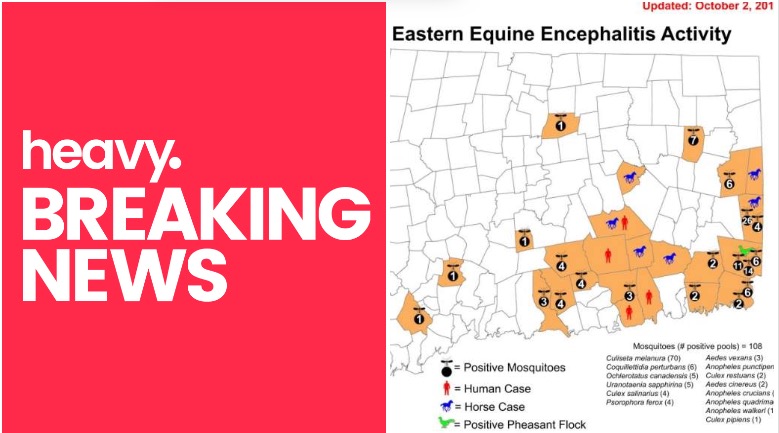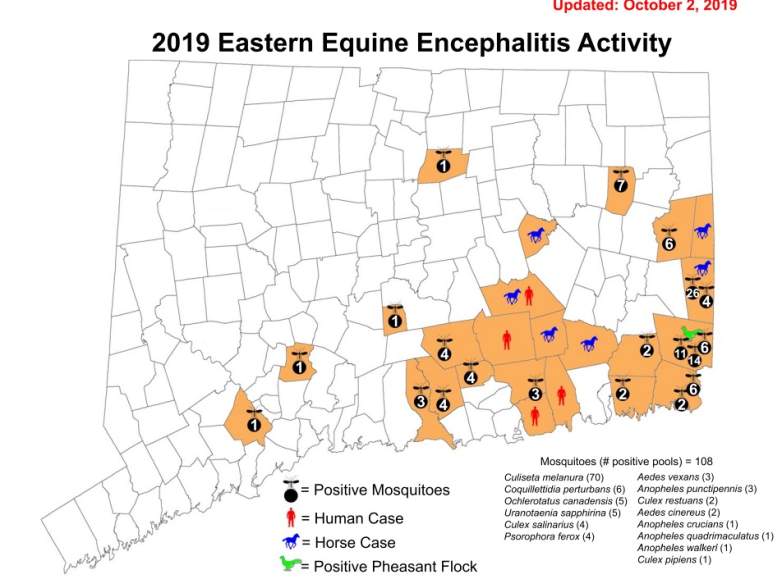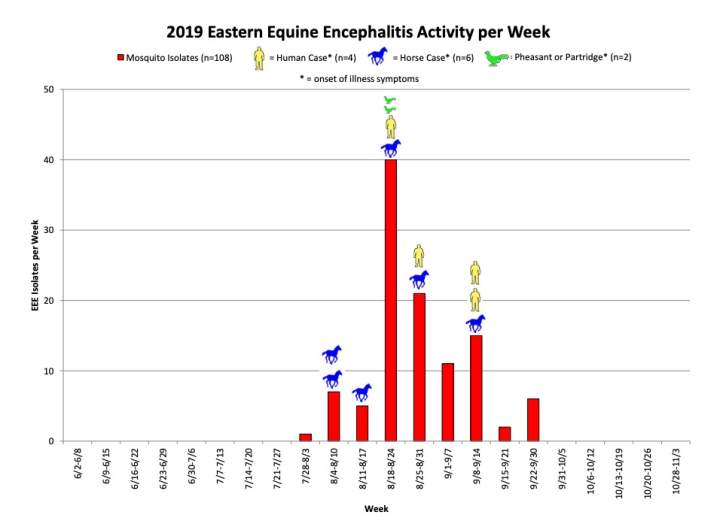
A third death has been reported in Connecticut from the EEE virus. Eastern equine encephalitis is transmitted by mosquitoes and while the illness is still rare in humans, an increasing number of cases are being reported as 2019 comes to an end. Connecticut is one of several states reporting human cases and deaths.
EEE symptoms can start out as fever, chills, and joint and muscle pain, the Texas Department of State Health Services notes. Some people only have mild flu-like symptoms but others develop more serious illnesses. About half of those go on to develop the encephalitic disease, StatNews reported.
When the illness gets more serious, the symptoms can be a sudden and severe headache, a high fever, vomiting, diarrhea, disorientation, convulsions and seizures, and even coma. If you get a high fever of 103 to 105 that comes on rapidly with a severe headache, you should see a doctor right away, Fox 61 reported.
Although still considered rare, the disease can have a 33 percent mortality rate in those who develop the encephalitis symptoms. The incubation period for the illness is four to 10 days. There’s a vaccine for horses, but there’s currently no vaccine for humans.
Maps Showing the EEE Virus in Connecticut
The first map is a nationwide map that you can zoom into in order to see Connecticut. The map below will start out by showing the West Nile Virus, since this is the default. Click on EEE at the top of the map (WNV is auto-checked) to see EEE human cases instead. Then hit the + icon at the bottom right to zoom into the map to see Connecticut up close.
The Connecticut Agricultural Experiment Station posts updated maps of EEE activity in the state along with other details here. A screenshot of an updated map for October 2 is below. At the time of publication, this is the most recent map available.
The map above shows where human cases have been reported versus horse cases and positive pheasant flocks. It also indicates where positive mosquitoes have been found.
This chart below indicates in which weeks humans, horses and birds experienced the onset of the illness.
Three People in Connecticut Have Died from EEE
Three people in Connecticut have died from EEE and four human cases have been confirmed in the state. The person who died was from East Haddam and was in their 60s, NBC CT reported.
According to Fox 61, the four human cases were all concentrated in one area that includes Colchester, East Haddam, Old Lyme, and East Lyme. Three out of four of those communities didn’t have mosquito traps until the first human cases were discovered.
The fourth victim who is still alive was bitten in Colchester and has been in the hospital for over a month, Fox 61 reported. They are in their 40s and became ill in August.
EEE had been detected in 21 Connecticut towns, News 8 reported.
- Chester
- Colchester
- Columbia
- East Lyme
- Groton
- Haddam
- Hampton
- Killingworth
- Ledyard
- Lyme
- Madison
- Montville
- North Stonington
- Old Lyme
- Plainfield
- Salem
- Shelton
- South Windsor
- Sterling
- Stonington
- Voluntown
Residents should wear repellents that contain DEET or picaridin or wear long sleeves and long pants until the first hard frost below 32 degrees. The virus is spread by mosquitoes.
READ NEXT: EEE Virus Map Near Me: State-by-State List of Cases & Deaths

